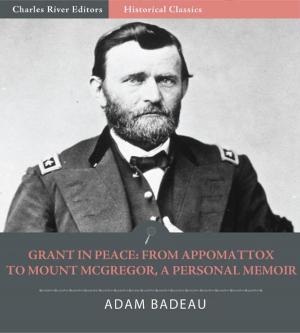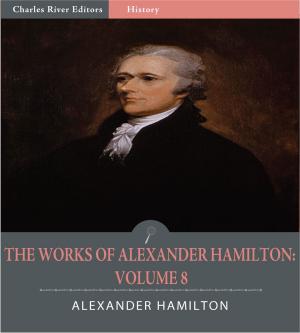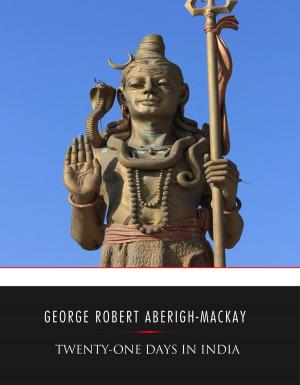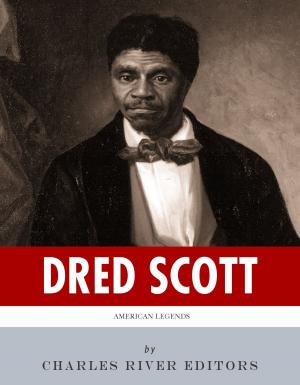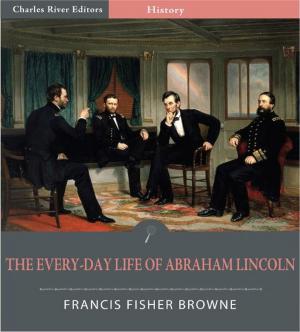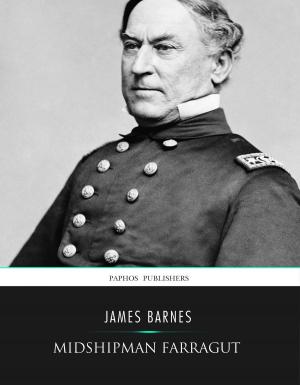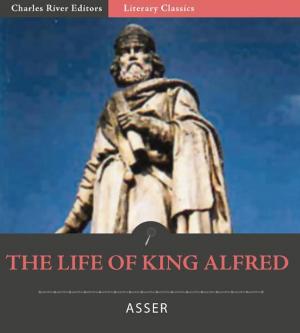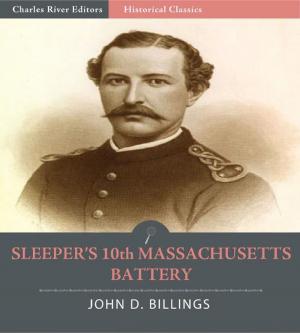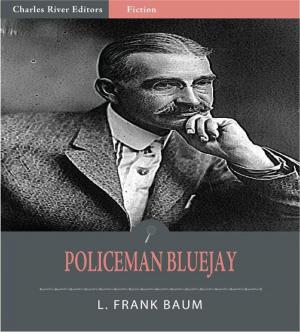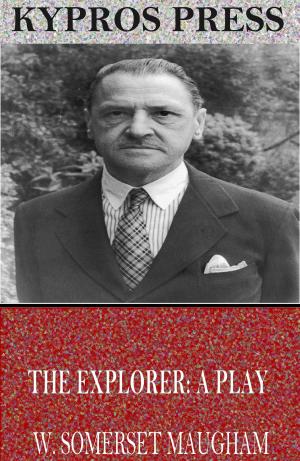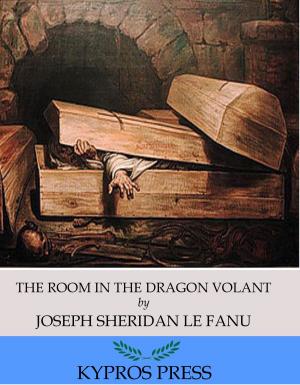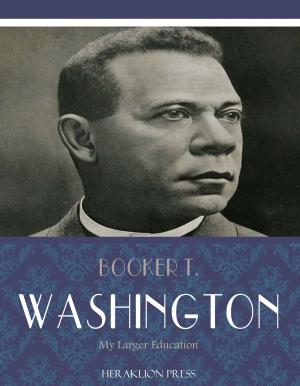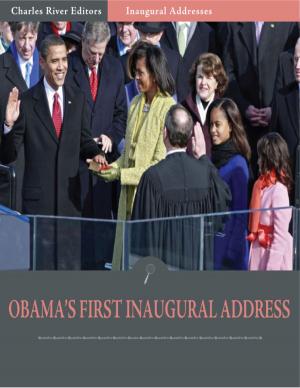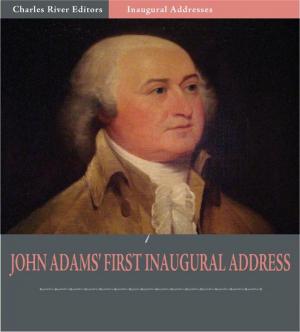Vladimir Lenin, Joseph Stalin & Leon Trotsky: The Soviet Union's Big Three
Nonfiction, History, Scandinavia, Biography & Memoir, Political| Author: | Charles River Editors | ISBN: | 9781475324280 |
| Publisher: | Charles River Editors | Publication: | June 7, 2013 |
| Imprint: | Language: | English |
| Author: | Charles River Editors |
| ISBN: | 9781475324280 |
| Publisher: | Charles River Editors |
| Publication: | June 7, 2013 |
| Imprint: | |
| Language: | English |
*Includes pictures of Lenin, Stalin, Trotsky and important people, places, and events in their lives.*Explains each man's role in the Revolution and its aftermath. *Discusses the conspiracy theories surrounding Stalin's death and how Stalin came to power against Lenin's wishes.*Includes a bibliography for further reading.*Includes a Table of ContentsAmong the leaders of the 20th century, arguably none shaped the course of history as much as Vladimir Lenin (1870-1942), the Communist revolutionary and political theorist who led the Bolshevik Revolution that established the Soviet Union. In addition to shaping the Marxist-Leninist political thought that steered Soviet ideology, he was the first Soviet premier until his death and set the Soviet Union on its way to becoming one of the worlds two superpowers for most of the century, in addition to being the Wests Cold War adversary. As it turned out, the creation of the Soviet Union came near the end of Lenins life, as he worked so hard that he had burned himself out by his 50s, dying in 1924 after a series of strokes had completely debilitated him. Near the end of his life, he expressly stated that the regime's power should not be put in the hands of the current General Secretary of the Communist Party, Joseph Stalin. Of course, Stalin managed to do just that, modernizing the Soviet Union at a breakneck pace on the backs of millions of poor laborers and prisoners. If Adolf Hitler had not inflicted the devastation of World War II upon Europe, its quite likely that the West would consider Joseph Stalin (1878-1953) the 20th centurys greatest tyrant. Before World War II, Stalin consolidated his position by frequently purging party leaders (most famously Leon Trotsky) and Red Army leaders, executing hundreds of thousands of people at the least. In one of historys greatest textbook examples of the idea that the enemy of my enemy is my friend, Stalins Soviet Union allied with Britain and the United States to defeat Hitler in Europe, with the worst of the wars carnage coming on the eastern front during Germanys invasion of Russia. Nevertheless, the victory in World War II established the Soviet Union as of the worlds two superpowers for nearly 50 years, in addition to being the Wests Cold War adversary. Along with Vladimir Lenin, Trotsky led the October Bolshevik Revolution of 1917 and held crucial posts in the early Soviet governments, but after Lenins death Trotsky was exiled, persecuted and finally murdered at the behest of his arch-rival, Joseph Stalin. For the final decade of his life, Trotsky was a man trapped in between two worlds. A communist seeking refuge in the capitalist West, Trotsky was deemed a secret agent of the capitalist powers by Stalins propaganda, but the Soviet Unions enemies also viewed him with suspicion. In the initial aftermath of Lenins death, Trotsky had been his allys heir apparent, and for those inclined to believe the Soviet experiment had started promisingly but gone astray, Trotsky became the embodiment of the betrayed promise of the early Bolshevik revolution. There were certain ironies in this widespread sympathetic interpretation of Trotskys legacy. For the Marxists and Marxist sympathizers appalled by Stalins paranoid police state, Gulag concentration camps, and strict suppression of dissent, Trotsky was viewed as a humane and cosmopolitan opposite to Stalin. But Trotsky himself had overseen and spearheaded campaigns of persecution against Russians suspected of “counterrevolutionary” leanings, and he had written a long tract defending these “terroristic” measures as necessary safeguards of the revolution. The Soviet Union's Big Three explores the lives and legacies of Lenin, Trotsky and Stalin before the Bolshevik Revolution, as well as the crucial roles they played in establishing the Soviet Union and turning it into a modern superpower.
*Includes pictures of Lenin, Stalin, Trotsky and important people, places, and events in their lives.*Explains each man's role in the Revolution and its aftermath. *Discusses the conspiracy theories surrounding Stalin's death and how Stalin came to power against Lenin's wishes.*Includes a bibliography for further reading.*Includes a Table of ContentsAmong the leaders of the 20th century, arguably none shaped the course of history as much as Vladimir Lenin (1870-1942), the Communist revolutionary and political theorist who led the Bolshevik Revolution that established the Soviet Union. In addition to shaping the Marxist-Leninist political thought that steered Soviet ideology, he was the first Soviet premier until his death and set the Soviet Union on its way to becoming one of the worlds two superpowers for most of the century, in addition to being the Wests Cold War adversary. As it turned out, the creation of the Soviet Union came near the end of Lenins life, as he worked so hard that he had burned himself out by his 50s, dying in 1924 after a series of strokes had completely debilitated him. Near the end of his life, he expressly stated that the regime's power should not be put in the hands of the current General Secretary of the Communist Party, Joseph Stalin. Of course, Stalin managed to do just that, modernizing the Soviet Union at a breakneck pace on the backs of millions of poor laborers and prisoners. If Adolf Hitler had not inflicted the devastation of World War II upon Europe, its quite likely that the West would consider Joseph Stalin (1878-1953) the 20th centurys greatest tyrant. Before World War II, Stalin consolidated his position by frequently purging party leaders (most famously Leon Trotsky) and Red Army leaders, executing hundreds of thousands of people at the least. In one of historys greatest textbook examples of the idea that the enemy of my enemy is my friend, Stalins Soviet Union allied with Britain and the United States to defeat Hitler in Europe, with the worst of the wars carnage coming on the eastern front during Germanys invasion of Russia. Nevertheless, the victory in World War II established the Soviet Union as of the worlds two superpowers for nearly 50 years, in addition to being the Wests Cold War adversary. Along with Vladimir Lenin, Trotsky led the October Bolshevik Revolution of 1917 and held crucial posts in the early Soviet governments, but after Lenins death Trotsky was exiled, persecuted and finally murdered at the behest of his arch-rival, Joseph Stalin. For the final decade of his life, Trotsky was a man trapped in between two worlds. A communist seeking refuge in the capitalist West, Trotsky was deemed a secret agent of the capitalist powers by Stalins propaganda, but the Soviet Unions enemies also viewed him with suspicion. In the initial aftermath of Lenins death, Trotsky had been his allys heir apparent, and for those inclined to believe the Soviet experiment had started promisingly but gone astray, Trotsky became the embodiment of the betrayed promise of the early Bolshevik revolution. There were certain ironies in this widespread sympathetic interpretation of Trotskys legacy. For the Marxists and Marxist sympathizers appalled by Stalins paranoid police state, Gulag concentration camps, and strict suppression of dissent, Trotsky was viewed as a humane and cosmopolitan opposite to Stalin. But Trotsky himself had overseen and spearheaded campaigns of persecution against Russians suspected of “counterrevolutionary” leanings, and he had written a long tract defending these “terroristic” measures as necessary safeguards of the revolution. The Soviet Union's Big Three explores the lives and legacies of Lenin, Trotsky and Stalin before the Bolshevik Revolution, as well as the crucial roles they played in establishing the Soviet Union and turning it into a modern superpower.


